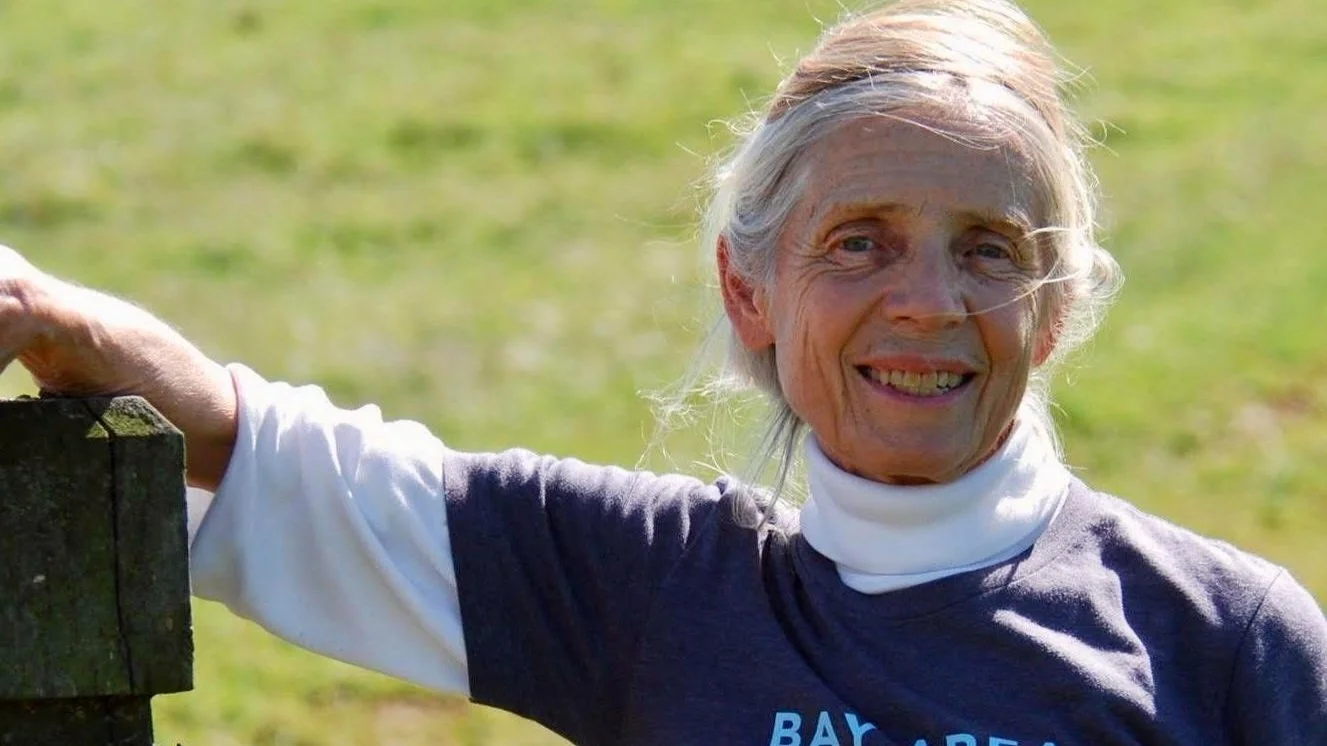Stoddard Path, which goes from Miller Ave. to Grizzly Peak Blvd. Photo courtesy of Charlie Bowen,
Charlie Bowen had no idea that a network of walking paths wound through the Berkeley hills until she went to her first Berkeley Path Wanderers Association meeting more than two decades ago. Steep and twisty, the paths are public rights-of-way that date to the early 1900s. Back then automobiles were uncommon and most people relied on streetcars, so developers set aside 10-foot-wide strips between lots for paths that served as neighborhood shortcuts to rail lines. Today the paths offer spectacular, unimpeded views of the San Francisco Bay as well as opportunities for urban hiking, an affordable, accessible activity that reduces stress and buoys spirits.
All told, the city of Berkeley has 126 designated paths. But when Bowen joined the Path Wanderers Association, many had not yet been built. Soon, she was building steps up pathways and leading work crews. “I was hooked on the idea of volunteer work parties to get the paths built,” she recalls, adding that the group coordinates with the Berkeley Public Works Department civil engineer in charge of the paths. “We started with the easiest paths, which were less steep and less obstructed.” Barriers along unbuilt paths can range from rhododendrons and other mature landscaping to fences that block the ends of pathways or extend lengthwise along paths from top to bottom.
Now Bowen serves as a liaison between the city and the people living next to unbuilt paths, whom she calls neighbors. Most paths have four neighbors, she says, explaining that these rights-of-way connect consecutive streets that curve along the contour lines of the hills. “The path goes from one street up to the next.”
Stoddard Path, which goes from Miller Ave. to Grizzly Peak Blvd. Photo courtesy of Charlie Bowen
While the city would just send out a letter to inform people that a path was going to be built along their property line, Bowen takes a gentler approach. “I prefer to go knock on the door and talk to them in person,” she says. “I’m very sympathetic in my heart because I know it’s a big scary thing.” She also likes to give people plenty of notice, ideally a year or more, to get used to the idea.
Most people take the news graciously, but “sometimes neighbors want to get lawyers and protest,” Bowen says, adding that this is to no avail because the paths are public just like streets and sidewalks. She refers sticky situations to the city. “The civil engineer takes the lead if neighbors are contentious or hostile,” Bowen says.
Once new paths are built, those living along them often find that they are far less disruptive than feared. “It’s primarily your Berkeley neighbors passing along quickly, not huge numbers of people,” Bowen says. Some people with lots bordering newly-built paths even embrace them. Bowen treasures a moment when she was part of a crew weeding a path she had facilitated, and a neighbor said “our path is very well used” and thanked them. “She was proud,” Bowen says. “It’s stored in my memory as a nice interaction.”
This article originally appeared in the Bay Area Monitor. For more information, visit Benefits of Urban Hiking: Explore San Francisco.


